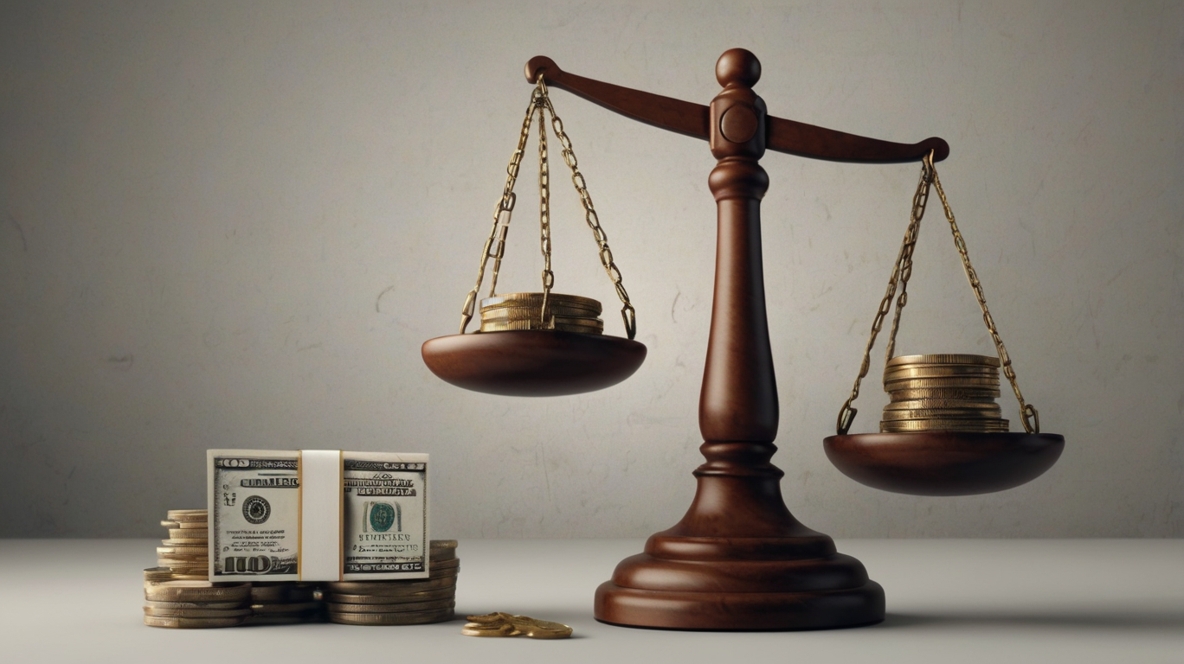The Architecture of Your Liberation
There is a path through the wilderness. Building a fortress of financial resilience with ETFs follows a clear, logical progression. First, you must confront the truth of where you are and decide, with unflinching honesty, where you want to go. Second, you will design the structure—your asset allocation—that can weather the storms. Third, you’ll select the actual building blocks, the specific ETFs that bring your blueprint to life. Finally, you will become the steward of your own creation, managing and fortifying it for the decades to come.
Step 1: Confront the Reflection in the Mirror
The stale, metallic smell of cooling steel hung in the air of the garage, a familiar comfort to Alonzo. Here, amidst the welders and grinders, he was a master. He could fuse metal, bend it to his will, create something strong and useful from raw material. But at his workbench, staring at the laptop screen, he felt like a fraud. The words swam together: prospectus, expense ratio, diversification. It was a language he didn’t speak, a world as alien as the dark side of the moon. He just wanted to build something that would last for his family, something beyond the next contract job. But the sheer volume of information felt like a physical weight, pressing down, paralyzing him.
This is the first battle, and it isn’t fought on a stock chart. It’s fought within. Before you buy a single share, you must define the mission. Why are you doing this? Is it for a down payment on a house in five years, the scent of fresh paint a tangible dream? Is it for a retirement thirty years from now, a vision of quiet mornings without the shriek of an alarm clock? Your timeline dictates your capacity for risk. The longer your horizon, the more turbulence you can endure, because you have time for the engines to recover and climb again.
Then comes the brutal honesty of assessing your own nerve. When the market plunges—and it will, it always does—will you feel the icy grip of panic and hit the eject button at the worst possible moment? Or can you clench your jaw and hold the line? This isn’t about being fearless; it’s about knowing your fear. This internal audit is the foundation upon which everything else is built. Ignore it, and the first market tremor will bring your house down.
So, what is an ETF, really? Think of it as a basket. Instead of buying one single item (a stock, like Apple), you’re buying a basket that holds hundreds or thousands of items, all bundled together. This basket trades on the stock exchange just like a single stock, making it incredibly easy to buy and sell. The core ETF investing pros and cons are a study in this simplicity: you get instant diversification and low costs, but the ease of trading can tempt you into making rash, emotional decisions. Understanding this duality is the first step toward using the tool, instead of letting the tool use you.
Step 2: Drawing the Battle Lines with Asset Allocation
The apartment was small but immaculate. For Aylin, a veterinary technician, order was a defense against a world of chaos and uncertainty. A bad investment made in her early twenties, swayed by a friend’s “hot tip,” had left a scar of caution on her financial psyche. Now, as she planned for her own future and the increasing needs of her aging parents, every move was deliberate. She wasn’t looking for a lottery ticket; she was designing a life raft.
This is where you draw your lines. Asset allocation is simply deciding how to divide your money between different types of investments, primarily stocks (equities) and bonds (fixed income). This decision—not picking the “hottest” stock—is the single most powerful driver of your future returns. Stocks are the engine of growth, powerful but volatile. Bonds are the brakes and the anchor, providing stability and income when the stock market is a thrashing sea.
A younger investor with decades to go might choose an aggressive 80% stock, 20% bond mix. Someone nearer to retirement, whose main goal is preserving capital, might opt for a conservative 40% stock, 60% bond portfolio. There is no single “right” answer, only the answer that is right for you and your timeline, the one that lets you sleep at night.
And you must resist the urge to only bet on your home team. The conviction that your own country’s market is the only one that matters is a dangerous blind spot. True diversification is global. Including a healthy slice dedicated to international ETF investing isn’t just a defensive move; it’s an offensive one, giving you access to growth and opportunity wherever it may arise on the planet.
Step 3: Choosing Your Weapons—Selecting the Right ETFs
With her allocation mapped out like a surgical plan—60% U.S. Stocks, 20% International, 20% Bonds—Aylin began the hunt. This phase, once a source of terror, now felt empowering. She wasn’t gambling; she was executing a strategy. The central question of how to choose the right ETF for each of her buckets became a methodical process of elimination.
The first and most critical filter is cost. Every dollar you pay in fees is a dollar that isn’t compounding for you. It’s a slow, parasitic drain on your future wealth. This is where etf expense ratios explained becomes your most powerful piece of knowledge. The expense ratio is the annual fee the fund charges, expressed as a percentage. For broad market index ETFs, you should be looking for microscopic numbers—0.10% or, in many cases, much, much lower. A difference of half a percent seems trivial, but over 30 years, it can devour hundreds of thousands of dollars of your returns.
This is a key differentiator in the ETF vs mutual fund debate. While both offer diversification, ETFs typically boast lower expense ratios, greater tax efficiency, and the ability to be traded throughout the day like a stock, unlike mutual funds which are priced once at the close of trading. For most people, the best ETFs for beginners are broad, low-cost index funds that simply track the entire market, like one for the S&P 500 or a total U.S. stock market fund. You’re not trying to outsmart the market; you’re trying to be the market.
Once you have a core portfolio, you can consider smaller, more tactical positions if your strategy calls for it. Maybe you believe a certain area will outperform, leading you to look at sector ETFs: what they are and how to use them for technology or healthcare. Or perhaps your goal is to generate income, leading you to investigate the best dividend ETFs. But these are supplemental—the heart of your portfolio should be the broad, boring, beautifully effective index funds.
See the Blueprint in Action
Sometimes, seeing is believing. Watching someone walk through the process of selecting funds on a real brokerage platform can make the abstract concepts click into place. The following video gives a clear, visual walkthrough of how these principles are applied in the real world, reinforcing the steps from defining a strategy to actually building the portfolio.
Source: How to Build a Perfect ETF Portfolio Step by Step via YouTube
Step 4: The Long, Steady Work of Stewardship
The graphs on Hugo’s screen glowed green. Five years into his disciplined investment plan, the logistics manager felt a surge of pride. It was working. His portfolio, once a modest seed, had grown substantially. But a closer look revealed a subtle danger. His aggressive stock allocation, which started at 80%, had drifted to nearly 90% due to strong market performance. His bond anchor was shrinking in proportion. The old, greedy impulse whispered in his ear: Let it ride. Don’t sell the winners. But he knew that whisper was the siren song of ruin. True discipline wasn’t just buying; it was maintaining.
This is the final, and perhaps most difficult, stage of how to invest in ETFs for keeps. It’s the commitment to a ‘buy and hold’ philosophy, a defiant stand against the market’s daily noise and your own brain’s worst impulses. Your job is not to predict the rain; it’s to build an ark.
Part of building that ark is rebalancing. At set intervals—once a year is plenty for most—you must look at your portfolio and restore its original allocation. This forces you to do what feels emotionally impossible: sell what has done well (selling high) and buy what has lagged (buying low). It is the very definition of a disciplined, unemotional strategy and a cornerstone of true advanced investing and wealth building.
You also have to be smart about what you give away. Considering ETF tax efficiency is crucial, especially in a regular taxable brokerage account. ETFs are generally more tax-efficient than mutual funds because of how they are structured, creating fewer taxable events. Holding the right assets in the right accounts (e.g., less tax-efficient assets in tax-advantaged retirement accounts) is a pro-level move that preserves more of your growth for you, not the taxman.
Your Personal Toolkit for Construction and Oversight
You don’t need to build this machine with your bare hands. The great irony is that the same brokerages that were once imposing fortresses are now the ones giving you the tools to chart your own path for free. You don’t need to pay a fortune for an “ETF portfolio builder.”
Most major platforms like Vanguard, Fidelity, and Schwab have powerful ETF screeners built right in. You can filter the entire universe of funds by expense ratio, asset class, and performance. They also provide portfolio analysis tools that can show you your overall allocation, diagnose concentration risks (like having too much overlap between two different funds), and track your performance against key benchmarks. Forget the fancy third-party apps with subscription fees. Start with the free, devastatingly effective tools your broker provides. You have everything you need to begin.
Forging Your Intellect: Essential Reading
Conviction is forged in the fires of knowledge. When the storms hit, a vague plan won’t be enough. You need a deep, philosophical understanding of why you are doing what you are doing. These books are not just instruction manuals; they are foundational texts for building an unshakable investment mindset.
The Little Book of Common Sense Investing by John C. Bogle: This is the gospel. Written by the founder of Vanguard, it lays out the simple, undeniable case for owning a diversified portfolio of all the market’s stocks at the lowest possible cost. It’s less a “how-to” and more a “why-to” that will change how you view investing forever.
The ETF Book by Richard A. Ferri: For those who want to go deeper into the mechanics, this is an indispensable resource. Ferri provides a comprehensive, objective overview of the entire ETF landscape, giving you the context to make smarter, more informed choices beyond the basics.
Lingering Questions from the Void
Before the final push, we must address the whispers of doubt that linger. Here are answers to the questions that echo in the minds of those standing at the precipice of action. Knowing them is another way to solidify your grasp on how to build an ETF portfolio.
How many ETFs should I have in my portfolio?
The desire for complexity is a trap. For the vast majority of investors, a portfolio of 5 to 10 ETFs is more than enough to achieve profound diversification across asset classes and geographies. Often, as few as 2 or 3 can do the job exceptionally well. The goal is not to collect funds; it’s to build a cohesive, low-cost machine.
What is the 3-fund portfolio strategy?
This is elegance in its purest form, a classic “Boglehead” model. It consists of just three broad index funds: a U.S. total stock market fund, an international total stock market fund, and a U.S. total bond market fund. With these three pillars, you own a slice of nearly every public company and investment-grade bond in the world. It’s simple, cheap, and brutally effective.
What is the 70/30 ETF portfolio rule?
This isn’t a “rule” so much as a common recipe for asset allocation. It refers to a portfolio with 70% in equities (stocks) and 30% in fixed income (bonds). It’s generally considered a “balanced growth” approach, seeking solid returns from stocks while using a significant bond allocation to cushion the ride during market downturns. It’s a solid middle ground for an investor with a moderate risk tolerance and a reasonably long time horizon.
Continue Sharpening the Blade
Your education doesn’t end here. The landscape evolves, and staying informed is part of being a responsible steward of your own future. These resources are excellent places to continue your learning journey and stay current.
- ETF.com: A hub for news, data, and analysis on all things ETF.
- Morningstar: Provides independent research and ratings on funds and stocks.
- iShares Education: The educational arm of BlackRock, a major ETF provider.
- Vanguard Education Center: Invaluable resources from the pioneer of index investing.
- r/ETFs: A Reddit community for discussing ETF strategies and news, offering real-world perspectives.
- Charles Schwab Learning Center: Another excellent source of educational material from a major brokerage.
Ignition
The path is clear. The tools are in your hands. The fear you feel is just energy, waiting to be redirected. The paralysis Alonzo felt in his garage… the caution that guided Aylin’s planning… the discipline Hugo had to master… these are not signs of weakness. They are the human elements of a journey toward strength. The only thing separating you from them is a single decision.
Do not let another 2 AM find you listening to the hum of the refrigerator, trapped in a cycle of worry. Your first step doesn’t have to be massive. Open a brokerage account. Use one of their free tools to draft a hypothetical portfolio based on what you’ve learned here. Take one small, definitive action. Turn the key. Start the engine. The knowledge of how to build an ETF portfolio is worthless without the will to act. Go.







